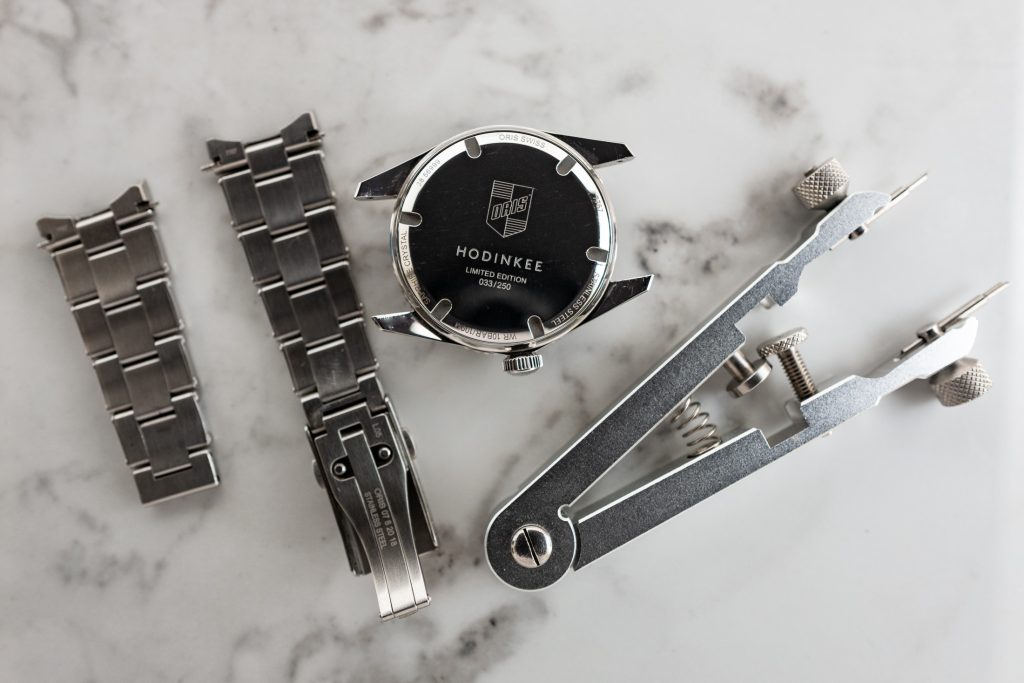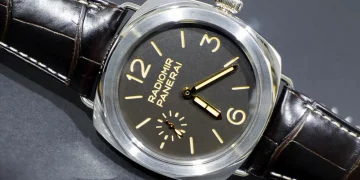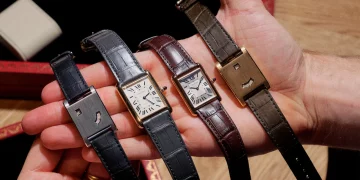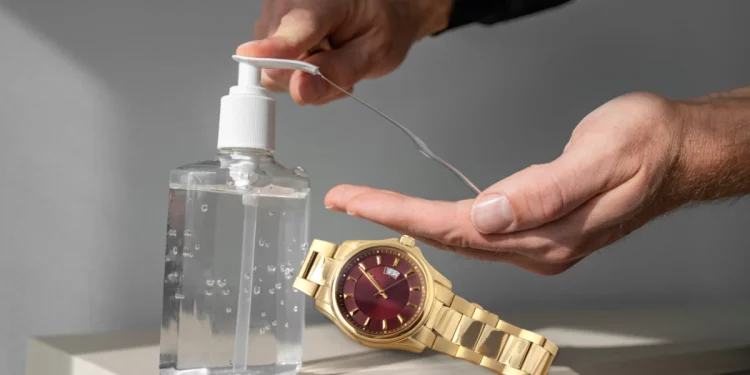Introduction: Why Watch Maintenance Matters
Watches, whether a simple quartz piece or a high-end mechanical marvel, require regular maintenance to ensure longevity and optimal performance. While some repairs and complex maintenance tasks should always be handled by professionals, there are several simple steps you can take at home to keep your timepiece in top condition. Regular DIY watch care not only preserves the aesthetic and mechanical integrity of your watch, but it also enhances its accuracy and helps avoid costly repairs down the line.
This DIY Watch Maintenance Guide will cover five essential steps to maintain your watch at home. It will also highlight the tools and products every watch collector should have on hand to make these tasks easier. Whether you’re a seasoned watch enthusiast or just starting to appreciate timepieces, these tips will help you keep your watch in perfect working order without breaking the bank.
Step 1: Cleaning Your Watch Regularly
Watches are exposed to dirt, oils, sweat, dust, and moisture on a daily basis. Regular cleaning is crucial to ensure that your timepiece remains free from debris that could impair its functionality and appearance. The process doesn’t need to be complicated; with a few simple steps, you can keep your watch looking as good as new.
What You Need:
- Microfiber Cloth: A soft, lint-free cloth is essential for wiping off any dust or fingerprints from the surface of your watch without damaging the dial or case.
- Soft-Bristled Brush: A toothbrush or specialized watch cleaning brush with soft bristles is perfect for cleaning between the links of the band or around the crown and pushers.
- Water and Soap Solution: A mixture of warm water and mild soap (like dish soap) is gentle on the watch and safe for most materials. Avoid harsh chemicals, as these can damage the watch’s finish.
- Cotton Swabs: For delicate cleaning around small areas such as the caseback or under the lugs.
How to Clean Your Watch:
- Wipe Down the Watch: Use a microfiber cloth to gently wipe the surface of the case, bracelet, and crystal to remove any dust, fingerprints, or dirt.
- Brush the Bracelet: If your watch has a metal bracelet, gently brush the links with a soft-bristled brush dipped in a mild soap-water solution. Be careful not to scrub too hard to avoid scratching the metal.
- Clean the Crown and Pushers: Dip a cotton swab in the water solution and gently clean the crown, pushers, and any other small crevices that may have accumulated dirt or oils.
- Dry the Watch: After cleaning, gently pat the watch dry with a microfiber cloth. Ensure no moisture remains around the crown or other delicate areas.
Pro Tip:
Always check the water resistance of your watch before exposing it to moisture. Some watches are only resistant to splashes, while others are designed for underwater use. Be mindful of these ratings to avoid damaging the movement.
Step 2: Checking and Replacing the Battery
For quartz watches, the most common maintenance task is battery replacement. While most people opt for professional battery replacement, it’s actually a simple task that you can do yourself if you have the right tools.
What You Need:
- Battery Kit: A watch battery kit with various sizes of batteries (check your watch’s battery size beforehand) and a small screwdriver.
- Case Opener Tool: If your watch has a snap-back case, you can use a case opener to remove the back cover. If the back has screws, you’ll need a small screwdriver set.
- Tweezers: Fine-point tweezers for handling the delicate battery and other small components.
- Plastic Pusher Tool: To ensure you don’t scratch the case when opening it.
How to Replace the Battery:
- Remove the Case Back: Use the appropriate case opener tool to gently remove the back of the watch. Some watches have a snap-back design, while others have screws that need to be undone. Be sure to handle the case back carefully to avoid damage.
- Remove the Old Battery: Use tweezers to carefully remove the old battery. Be cautious not to touch the movement with your fingers, as oils can transfer and cause issues with the watch’s performance.
- Insert the New Battery: Place the new battery into the compartment. Ensure the battery is seated properly and is in the correct orientation.
- Close the Case Back: Replace the case back and ensure it’s securely in place. If there is a gasket, make sure it is intact and properly positioned to ensure water resistance.
- Test the Watch: After replacing the battery, set the time and check that the watch is functioning properly.
Pro Tip:
If your watch has been exposed to moisture or has a tight-fitting case back, it’s a good idea to have it pressure-tested for water resistance after changing the battery.
Step 3: Adjusting the Strap and Bracelet
Over time, your watch strap or bracelet may become loose or tight, especially with regular wear. Adjusting the fit of your watch is essential to ensure comfort and prevent unnecessary wear and tear.
What You Need:
- Pin Pusher Tool: A small tool designed to push the pins in and out of the links of the bracelet. This tool is essential for removing or adding links.
- Link Removal Tool: A specialized tool to help remove or add links to metal bracelets.
- Small Pliers: Used for precise adjustments when resizing leather or fabric straps.

How to Adjust the Bracelet:
- Remove Links: If your bracelet has too many links, use a pin pusher to remove the required number. Be gentle and don’t force the pins out, as doing so could damage the links.
- Reattach the Bracelet: Once you have removed the necessary links, use the pin pusher to reattach the bracelet by inserting the pins back into place. Make sure the bracelet is secure before wearing.
- Adjust Leather or Fabric Straps: If you have a leather or fabric strap, you can resize it by moving the buckle or adjusting the holes. Use small pliers to move the buckle if necessary.
Pro Tip:
When adjusting metal bracelets, it’s crucial to handle the links carefully to avoid scratching the surface. If you’re unsure about resizing the bracelet yourself, consider taking it to a professional watchmaker for assistance.
Step 4: Maintaining the Water Resistance
Water resistance is a key feature of many watches, but it’s not permanent. Over time, seals and gaskets can degrade, leading to water damage. Regular maintenance of the water resistance helps prolong the life of your timepiece.
What You Need:
- Silicone Grease: A special grease designed for watch gaskets to keep them lubricated and in good condition.
- Watchmaker’s Magnifying Glass: A magnifier to inspect seals and gaskets more closely.
- Pressure Tester: While this tool is typically used by professionals, some at-home enthusiasts invest in a simple pressure tester to check the water resistance of their watch.
How to Maintain Water Resistance:
- Inspect the Gaskets: Regularly inspect the gaskets around the case back, crown, and pushers for signs of wear or cracking. If any gaskets look damaged, it’s important to replace them immediately.
- Lubricate the Gaskets: Apply a small amount of silicone grease to the gaskets to keep them supple and effective. This will help prevent water from seeping into the watch.
- Check the Crown Seal: Make sure the crown is securely screwed down or pushed in to maintain its water resistance.
Pro Tip:
If your watch is exposed to water frequently, consider having the water resistance checked annually by a professional to ensure its integrity, especially if the watch has been opened for battery replacement.
Step 5: Storing Your Watch Properly
Proper storage of your watch can prevent unnecessary wear and tear, ensuring its longevity and accuracy. Whether you’re storing a collection or just taking off your watch for the night, following the right storage practices is essential.
What You Need:
- Watch Box or Case: A storage box with compartments to protect each watch from dust, scratches, and impacts.
- Watch Winder (for automatic watches): A winder helps keep the movement of an automatic watch ticking when you’re not wearing it.
- Watch Cleaning Cloth: For wiping down your watch before storage to remove any oils or dust.
How to Store Your Watch:
- Store Watches in a Safe Place: Place your watches in a case or box when not in use. Avoid leaving them in direct sunlight or in excessively humid or hot environments, as these conditions can damage the watch.
- Use a Watch Winder for Automatic Watches: If you own an automatic watch, use a watch winder to keep the movement running smoothly while you’re not wearing it. This helps avoid having to reset the time every time you put it on.
- Clean Your Watch Before Storing It: Before storing your watch, gently wipe it down with a microfiber cloth to remove any oils, dust, or moisture that may have accumulated during wear.
Pro Tip:
Never store your watch in a damp environment, as moisture can cause rust or damage to the movement.
Conclusion: Keep Your Timepiece Running Like New
By following these five simple steps for DIY watch maintenance, you can keep your timepiece looking great and functioning properly for years to come. Regular cleaning, battery changes, strap adjustments, water resistance maintenance, and proper storage are essential practices for ensuring the longevity and accuracy of your watch. By incorporating these tasks into your routine, you’ll not only enjoy the satisfaction of taking care of your watch but also avoid unnecessary repair costs in the future.





































